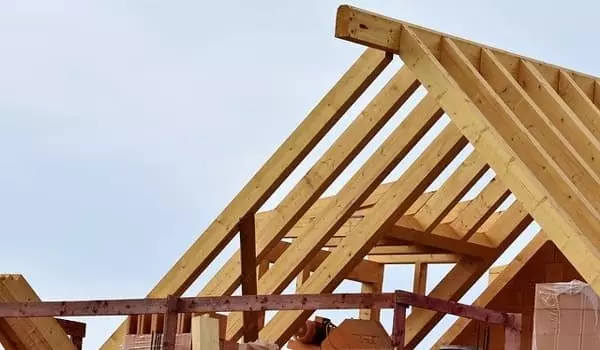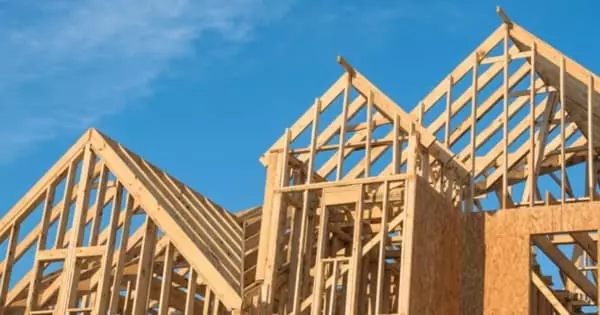A new study could assist architects and builders in lowering the carbon footprint of truss structures, which are the crisscrossing struts that support bridges, towers, and buildings. Buildings contribute significantly to global warming, not only through their ongoing operations but also through the materials used in their construction. Truss structures, which are crisscross arrays of diagonal struts used in everything from antenna towers to large building support beams, are typically made of steel, wood, or a combination of the two. However, little quantitative research has been conducted on how to select the right materials to minimize the contribution of these structures to global warming.
The “embodied carbon” in a construction material includes the fuel used in the material’s production (for example, mining and smelting steel or felling and processing trees) as well as the fuel used in transporting the materials to a site. It also includes the tools used in the construction process.
MIT researchers have now conducted a thorough analysis and developed a set of computational tools to assist architects and engineers in designing truss structures that minimize embodied carbon while maintaining all necessary properties for a given building application. While wood has a much lower carbon footprint in general, they claim that using steel in places where its properties can provide the most benefit can provide an optimized result.
Construction is a massive greenhouse gas emitter that has largely gone unnoticed for decades. However, in recent years, building designers have become more focused on how to reduce not only the operating energy associated with building use but also the significant carbon associated with the structure itself.
Josephine Carstensen
Ernest Ching, a graduate student, and Josephine Carstensen, an assistant professor of civil and environmental engineering at MIT, describe the analysis in a paper published in the journal Engineering Structures.
“Construction is a massive greenhouse gas emitter that has largely gone unnoticed for decades,” says Carstensen. However, in recent years, building designers “have become more focused on how to reduce not only the operating energy associated with building use but also the significant carbon associated with the structure itself.” This is where the new analysis comes in.
She describes the two main options for reducing carbon emissions associated with truss structures as substituting materials or changing the structure. However, she claims that there has been “surprisingly little work” on tools to assist designers in determining emissions-reducing strategies for a given situation.

The new system employs a technique known as topology optimization, which allows for the input of basic parameters such as the amount of load to be supported and the dimensions of the structure and can be used to generate designs optimized for various characteristics such as weight, cost, or, in this case, global warming impact.
Wood performs very well under compression forces, but not as well as steel under tension forces, which tend to pull the structure apart. According to Carstensen, wood is far superior to steel in terms of embedded carbon, so “especially if you have a structure that doesn’t have any tension, then you should definitely only use timber” to reduce emissions. One disadvantage is that “the weight of the structure will be greater than it would be with steel,” she says.
The tools they created, which served as the foundation for Ching’s master’s thesis, can be used at various stages of a structure’s development, from early planning to the final stages of design.
As a practice, the team created a proposal for reengineering several trusses with these optimization tools, demonstrating that significant savings in embodied greenhouse gas emissions could be achieved with no loss of performance. While they have demonstrated that improvements of at least 10% are possible, she claims that those estimates are “not exactly apples to apples” and that actual savings could be two to three times that.
“It’s about selecting materials more wisely for the specifics of a given application,” she says. Frequently in existing structures “You’ll have timber where there’s compression and it makes sense and really skinny steel members where there’s tension and it makes sense. That is also what we see in our suggested design solutions, but perhaps we can see it even more clearly.” However, she claims that the tools are not yet ready for commercial use because they lack a user interface.
Carstensen sees a trend toward increased use of timber in large construction, which represents a significant opportunity for reducing the world’s overall carbon emissions. “There is a lot of interest in mass timber structures in the construction industry, and this fits right in. So the hope is that this will make inroads into the construction industry and actually make a dent in that very large contribution to greenhouse gas emissions.”















